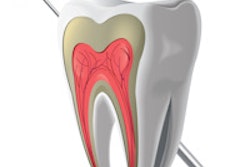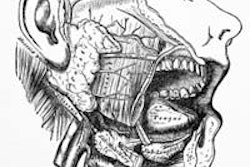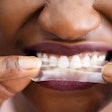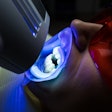
Bisphosphonate-associated osteonecrosis of the jaw (BONJ) is a rare condition, but patients on long-term bisphosphonate therapy are still at risk for it. So is there anything that can be done to mitigate this risk?
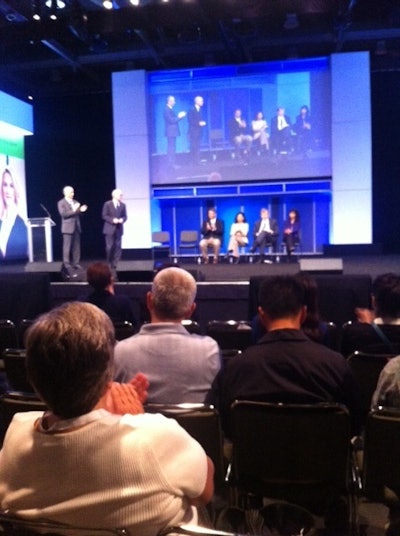 An expert panel discussed the issue of osteonecrosis of the jaw during a presentation on Friday at the 2012 ADA Annual Session.
An expert panel discussed the issue of osteonecrosis of the jaw during a presentation on Friday at the 2012 ADA Annual Session.
There are a few options, but none of them is fully reliable at this point in time, according to Thomas Dodson, DMD, MPH, from the Harvard School of Dental Medicine, who was part of an expert panel discussion on ONJ at the recent ADA Annual Session in San Francisco.
The expert panel was moderated by Michael Glick, DMD, and Dan Meyers, DDS, and, in addition to Dr. Dodson, consisted of Sook-Bin Woo, DMD, MSc, also from Harvard; Cesar Migliorati, DDS, PhD, from the University of Tennessee Health Science Center; and Joan Otomo-Corgel, DDS, MPH, from the University of California, Los Angeles School of Dentistry.
Dr. Dodson discussed asymptomatic, at risk patients who may be in need of an implant, extraction, periodontal surgery, or other operative interventions. It has been hypothesized that the duration of exposure to bisphosphonates can increase the risk for BONJ. Patients who have been on oral bisphosphonates for three years or more have a higher risk than those who have been taking the medication for a shorter duration.
"Folks who have been exposed longer are at a greater risk, and these are the folks we are more concerned about," Dr. Dodson said.
Drug holidays effective
What is currently being recommended is a drug holiday, Dr. Dodson told the packed auditorium. The drug holiday entails stopping the medication for three to six months prior to the procedure, then discontinuing for another three months postoperatively.
"It appears that when we discontinue the use of bisphosphonate, there is evidence of recovery of bone metabolic activity," he explained.
Dr. Dodson showed a slide that tracked the percentage change in N-terminal telopeptide (NTX), a biomarker used to measure the rate of bone turnover, in patients taking alendronate or Fosamax for zero to 10 years. The patients took the medication for the first five years and then switched to a placebo.
“No clinical data ... prove or disprove the value of a drug holiday.”
Their NTX levels increased for a year after they started taking the placebo, after which they reached a plateau. This has been interpreted as recovery of bone metabolic activity, Dr. Dodson said.
He then discussed another study that showed levels of serum C-terminal telopeptide (CTX), also a biomarker for bone metabolic activity, from zero to 16 moths after patients stopped taking bisphosphonates. The study also showed recovery of bone metabolic activity, which reaches a plateau after a while too.
So the rationale for using a drug holiday is twofold, Dr. Dodson explained. First, if there is evidence of recovery of bone metabolic activity, there may be an increased likelihood of healing after the tooth extraction or implant placement. The flip side is that there appears to be no harm in stopping someone from taking bisphosphonates for a few months since there is no increased risk to osteoporotic patients of fractures.
However, Dr. Dodson made it clear that the decision-making in this case is based on a pathophysiological rationale, which is taking evidence from a laboratory and translating it to taking care of patients. In the world of evidence-based clinical decision-making, this is considered level five evidence, which is the weakest form of evidence available.
"Right now, there are no clinical data that prove or disprove the value of a drug holiday to prevent BON," he said.
Question about CTX testing
Recently, it has been proposed that the serum CTX level may be a useful biomarker in identifying patients at risk, according to Dr. Dodson. There are indications that patients who have BON have a lower level of serum CTX than their counterparts who have also taken bisphosphonates but do not develop BON, he noted.
"The support, however, for this hypothesis is quite weak," he said. "It turns out that the range of CTX levels are so broad that they are quite difficult to interpret, and, again, this hypothesis is based on level five evidence."
He added that BON is a rare condition and because the risk of patients developing it is so low, it is difficult to use a laboratory test or a biomarker to identify those at risk.
So how does Dr. Dodson use CTX testing in his practice, and what does he do when a patient brings results from a CTX test?
"First of all, I have to ask how does this current level relate to the patient’s baseline? I don’t know because I did not see the patient’s baseline CTX levels," he explained.
So what is the value of CTX testing?
"I'd say little to none," Dr. Dodson said.
He noted that despite the lack of usefulness of the serum CTX testing, it is important to keep looking for biomarkers that may predict ONJ risk.
"I think the next breakthrough in the management of ONJ will be through identification of genetic markers," he concluded.





